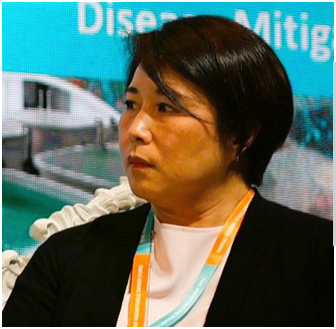Pushing the boundaries of current knowledge in managing outbreaks in marine fish and the uptake of vaccination for tilapia against bacterial diseases.
Industry’s growth and productivity are constantly constrained by current bacterial and viral diseases as well as parasite infestation. Additionally, the aquaculture industry is saddled with emerging pathogens. Preceded by presentations on managing diseases in marine fish and tilapia, and developing next generation biotech solutions, the panel on disease mitigation and innovations at TARS 2024 deliberated on how the industry can adopt present- day solutions to overcome these problems. Aside from presenters mentioned below, panel members were Jessica Kaye Turner, Assistant Managing Director, Nam Sai Farms Co Ltd, Thailand, and Dr Ei Lin Ooi, Regional Manager, Aquaculture Asia-Pacific, Adisseo Asia Pacific, Singapore. Dr Jarin Sawanboonchun, Aquaculture Nutrition and Feed Specialist, Thailand, was the moderator.
A science and an art in disease management
Dr Susan Gibson-Kueh, Associate Professor (Aquatic Animal Health), Tropical Futures Institute, James Cook University, Singapore, presented on “Diseases in Tropical Finfish Aquaculture: Busting Myths, Pushing Borders”. Farms experiencing disease outbreaks are often after a quick cure. However, there is seldom a secret remedy. Farmers need to focus on early detection and intervention.
She emphasised that disease management in aquaculture is both a science and an art. “Science because effective disease control should be based on facts from accurate diagnosis. Using information to manage disease is an art based on experience and a good grasp of the disease process in fish in the aquatic environment. The current thinking on pathobiome is that maintaining the diversity of bacteria in the gut and water through optimal nutrition and husbandry practices can be more effective than trying to eliminate a single pathogen.”
Scale drop disease
Scale drop disease (SDD) in Asian seabass Lates calcarifer is characterised by skin and scale loss, multifocal tissue deaths, and splenic infarcts. The disease spreads in the population, with clinical disease seen in older fish (>200-300g, Figure 1). “The loss of extensive areas of skin results in fish dying from dehydration in seawater. Bringing fish species tolerant to lower salinity to freshwater or lowering salinity to 15‰ to control the dehydration reduces mortality rate. But this is not easy as some farms do not have access to large volumes of freshwater.” She added that any pathogens that damage skin will cause dehydration in fish in seawater. SDD also causes severe inflammation and blockage of blood supply. “The spleen is an important immune organ in fighting diseases. Loss of the spleen means that fish becomes more susceptible to infection by bacteria commonly present in the water. Fish with SDD may die from dehydration or secondary bacterial infection. Vaccination can prevent fish from succumbing to bacterial infections.” Gibson-Kueh’s message was, “To know not only the pathogens but also understand how they affect and why they kill the fish.”
Big belly
This is a chronic, granulomatous bacterial enteritis and peritonitis, first reported in 3-4 week old seabass. “The on-going inflammation progresses to gut perforation and severe inflammation in the abdominal cavity. Fish die because in seawater the gut plays a key role in water absorption to counter dehydration. Moving the fish to freshwater will reduce losses,” said Gibson-Kueh.
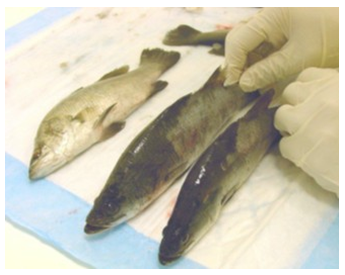
Parasites
Parasite control can be quite a struggle, especially when the life cycle of parasites is never broken. It is not just a matter of treating with the right chemicals, but treatment frequency must target susceptible parasite stages and break the life cycle. Eggs are very resistant to chemicals. It is critical to monitor the effectiveness of treatment which can vary with temperature and salinity.
“One of the reasons that some tropical fish farms struggle with parasite control is because they do not coordinate treatment of the whole farm or site due to limited manpower. Re-infection by hatching eggs or cysts needs to be considered to effectively treat parasites. In Norway, for sea lice, there is a very coordinated strategy to treat the entire site all at once.” Gibson-Kueh added that what is needed are efficacious oral medications to allow farms to treat the whole farm at any one time.
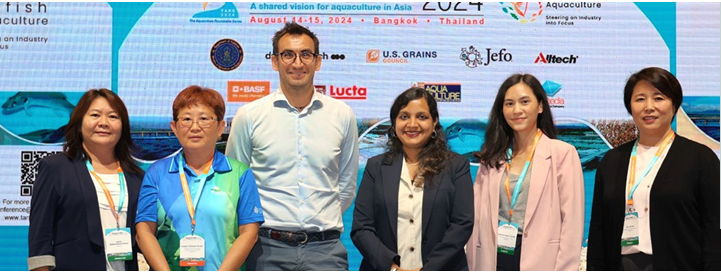
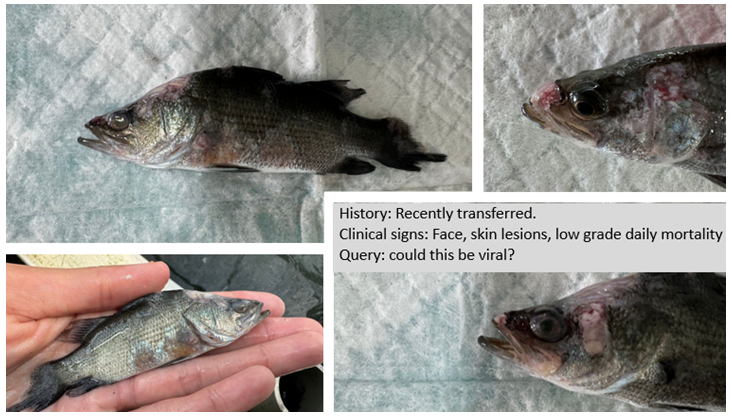
Effective treatment strategies depend on knowing the duration of each parasite stage to determine the frequency of treatment. More research is needed on parasite life cycle studies.

Monitoring and biosecurity
Keeping farms disease-free can be expensive. Representative fish samples and test selections are important in disease diagnosis. Gibson-Kueh cited a case where a farmer suspected viral disease on fish. She said, clinical recently transferred to grow-out tanks. signs generally appear more than 2-3 weeks after viral infections, and based on the face lesions it is more likely that cannibalism and recent transfer stress are responsible for poor health in these fish.
“We need to find the reasons why fish succumb to infections. Sometimes, bacteria in the water do not cause diseases at all; at other times they do. Proper diagnosis is necessary to guide disease management as there is no one-size-fits-all solution. Understanding the progression of specific diseases is important in effective management.”
Dr Roberto Cascione, Key Account Manager Asia & Middle East, Virbac Asia Pacific, Thailand, discussed “Tilapia Disease Pathogen Mapping: Challenges, Trigger Points and Possible Solutions”. He started with a pathogen mapping for tilapia in Southeast Asia, developed after years of epidemiological observations.
“Overall, we see that Streptococcus agalactiae serotypes Ia, III, Ib have spread all over farming areas in the last 10 years, evolving into a multivalent serotype scenario in Asia as well as in Africa and Latin America. For decades, the Philippines and Indonesia were decidedly monovalent with type Ib only. Today, S. agalactiae serotype Ia and Ib are infecting tilapia with Streptococcus iniae in Calabarzon in the Philippines. In Indonesia, there is S. agalactiae Ia, III and Ib in Java and Sumatra.”
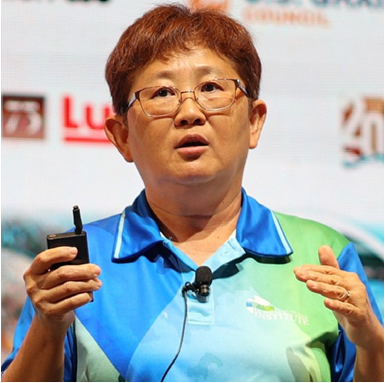
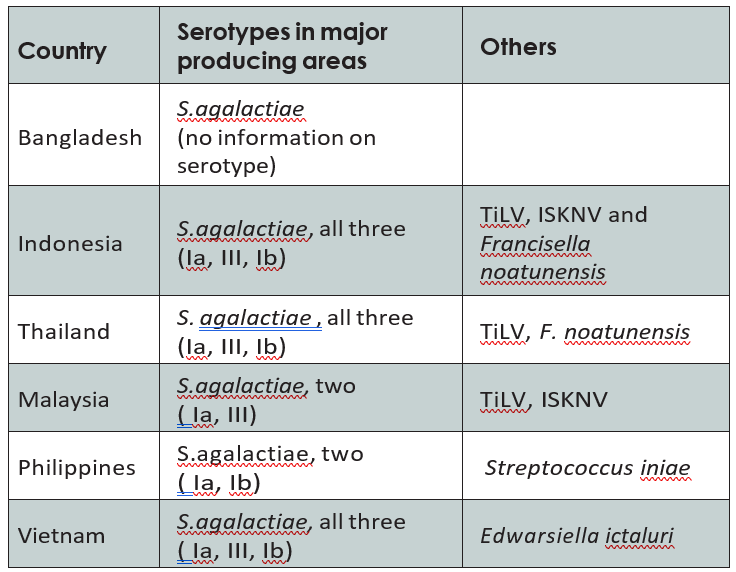
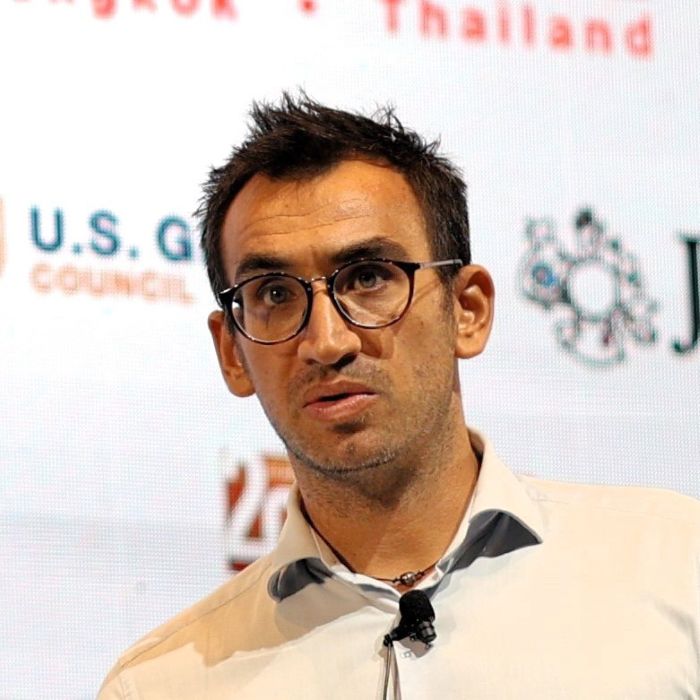
“In Thailand, there is the prevalence of specific serotypes of S. agalactiae with tilapia lake virus (TILV) in various districts in Khon Kean, Nong Kai, Petchaburi, Samut Prakan, and with Francisella noatunensis in Uttaradit. In Malaysia, S. agalactiae (Ia, III) are found together with TILV and spleen and kidney necrosis virus (ISKNV).”
Tilapia lake virus (TiLV) was a challenge 10 years ago, affecting especially at the hatchery and nursery stages. In red tilapia the infection is at varying pathogenicity and virulence. It is a serious limiting factor in the fry of black tilapia in Malaysia. These pathogens affect different stages of production.
Cascione said, “It is now clear that we often observe multiple infection scenarios in tilapia farming, an outbreak can include 1-3 pathogens at one time. Finding the pathogens is only the first step of the diagnostic process, because the simple detection does not give us the answer. We need to analyse farming history and seasonal changes, weather, temperature, and clinical signs together.”


Trigger factors
Cascione attributed the spread of these diseases to the global market and globalisation of diseases. There is the influence of climate change, fish movement, biosecurity lapses and production increases. “Tilapia has shown the fastest growth rates at 8.7% in the last 12 years. Farmers increase stocking density to produce more fish. We also note that vaccinated fish have shown a significant (30% average) better survival rate during outbreak seasons and at final recovery.”
New pathogens
The list is led by Francisella noatunensis, which is becoming more aggressive, especially in Indonesia, when water temperature drops below 25°C. ISKNV affects early or nursery stages. Edwardsiella ictaluri in north Vietnam does not allow farming in November to February as mortality is too high. ISKNV is an iridovirus affecting early stages. Indonesia, Malaysia and Vietnam are heavily affected by this virus with serious impacts on production. Parvovirus was recently reported by Dr Win Surachetpong, Kasetsart University in Thailand. It was detected in China and is lethal when associated with other disease such as TiLV.
Solutions
Vaccination helps to reduce mortality costs and harmonise the growth and predictability of crops. The limit, though, is the absence of multiple vaccines to overcome the current multiple pathogen situation. “However, Asia can learn from Brazil which has a massive growth rate at 8.3% which is related to a vaccination rate of 35%. In comparison, the vaccination rate is 1% in Southeast Asia and there are only three companies with vaccination programs: Manit Farms in Thailand, Regal Springs in Indonesia, and Trapia in Malaysia. In Colombia, there was a national vaccination program because of a large outbreak of S. agalactiae.”
Vaccination plays a key role in farming with differences in mortality rate with vaccinated and non-vaccinated fish. Other solutions include the Thai model of low-density and large surface farming, stocking in 3x3m or 6x6m cages, 2,000 to 6,000 fish. Recirculating aquaculture systems (RAS) and biofloc technology are options to overcome weather woes.
Cascione concluded, “Disease patterns are becoming unpredictable. We need regulatory changes to permit an open market for autogenous vaccines or simplify the accessibility to commercial vaccines. We need improved genetics on disease resistance and fish quality. There is no solution for all, but each system can find its own solution compatible with its needs.”
-Interestingly, Turner shared her experience at Nam Sai Farms, where the philosophy is to let nature play a key role. “What we did was allow our broodstock to faced diseases and develop natural immunity. We also let natural selection take its course—weak fish do not survive, while the stronger ones continue to thrive. In 1998, we lost 50% of the stock when a Streptococcus outbreak broke out. Resistant genes were passed to subsequent stocks, such that today mortality is less than 5% in summer.” Nam Sai now supplies disease resistant fry to farmers.
Next generation biotech solutions
Teora Pte Ltd, Singapore is a startup involved in developing next generation biotech solutions for disease management. CEO Dr Rishita Changede gave information on what it has in terms of solutions. “The current vaccines; primarily whole inactivated bacteria; if applied as orally can increase risk of disease. Viral vaccines are few, as they require specialised cell lines to produce. Injection vaccines may not be scalable for non-high margin species.”
The question is how to bring safe solutions from the human pharmaceutical industry to manage fish disease in Asia. “It is possible to create vaccines for bacterial and viruses. What we do is just use nanopeptides – a small portion, enough to trigger the immune system and anti-viral solutions to curb viral spread. Delivery is oral via top coating at the feed mill or farm. This allows us to protect against multiple different strains at the same time and give boosters.”
Trials were conducted against S. iniae and against SDD in Asian seabass at Thai Union and Asian Institute of Technology (AIT) in Thailand. These showed high survival rates and no adverse effects on production parameters such as weight gain and average daily growth. Rishita also introduced the SOLAQ platform where together with industry, the company can develop preventive biotech solutions against specific virus, parasites, and bacteria. “This can be the way forward to manage the multiple pathogens affecting fish.”
Ooi ended the conversation with, “We could be always chasing pathogens. Therefore, early detection or even good husbandry are key. Vaccination is very specific. Since we cannot foresee diseases coming, prevention and strengthening immunity will help.”
